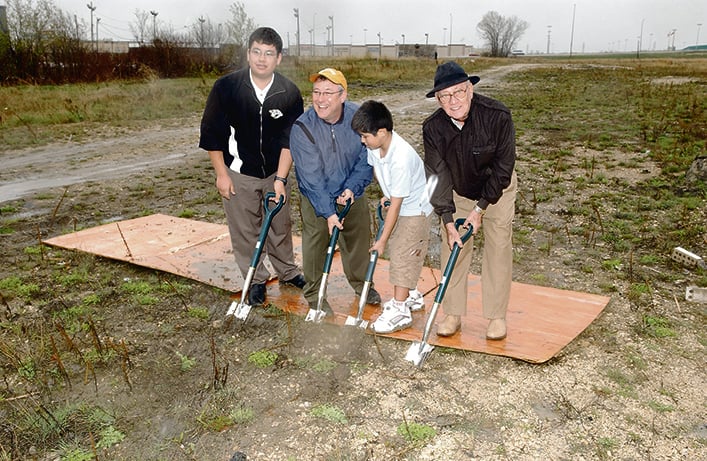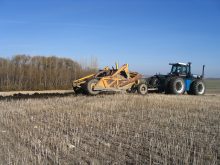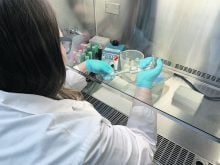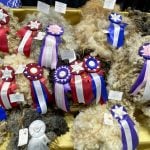The relationship between farmers and Princess Auto, the Canadian retail chain that marks its 90th anniversary this year, has been a long one.
Farmers were the key link in Princess Auto’s transformation from an auto wrecker into a national mail-order company, later morphing into 54 stores across Canada with $1 billion in sales per year in farm, light industrial and home do-it-yourself products.
The company was originally called Princess Auto Wrecking, founded in 1933 on Winnipeg’s Princess Avenue by a former merchant marine. By 1942, the owner wanted to unload the failing business and found a seeming mark in 19-year-old Harvey Tallman, patriarch of today’ Princess Auto. The retailer is now owned by a third generation of Tallmans, brothers Matt and Marc.
At the time of the sale, the auto wrecker had just three broken-down vehicles parked in back and generated almost no income. It was a painful start as Harvey Tallman learned the business and grew his auto parts inventory. He eventually built the company into the largest auto wrecker in Western Canada. Tallman died this year at age 99 but was interviewed earlier for a book on Princess Auto.
The United States became a key source of auto parts for Tallman, despite high border tariffs then. Tallman began venturing to Minneapolis in the mid-1940s with friend Benny Kushner, a Winnipeg taxi driver, and they would load up a boxcar of auto parts and rail it back to Winnipeg.
On one trip, Harvey spied a separate pile in the wrecking yard and asked what it was. It was stuff coming back from the Second World War, the man said.
Army surplus. It was a new term back then. Tallman looked over the pile: army boots, uniforms, guns, rifles, canteens, frying pans, jerry cans, helmets — anything a soldier could use. It had little to do with auto parts but Harvey was intrigued. Some items were lightly used and some were not used at all.
The items sold for a fraction of the purchase price but you had to buy in large volumes. Tallman bought a truckload and crammed it into his Winnipeg shop, then waited to see people’s reaction.
Customers loved it, many of whom were young men returning from the war and familiar with army goods. So Harvey went back for more, buying auto parts and war surplus now.
Princess Auto was soon stuffing army surplus into every hole and crevice on its property, now on Fort Street near the historic Fort Garry Hotel. Harvey once shipped a rail carload of war surplus jerry cans and stored them on the roof.
Farmers were always part of Princess Auto’s customer base, seeking truck and tractor parts. They now became its prime market when Harvey began shipping back industrial war surplus that he and his Princess Auto crew converted into farm equipment. Parts manufacturing had ground to a halt during the Second World War because of rationing and manpower shortages, so there was great demand for parts made from refurbished army surplus.
For example, farmers would come into Princess Auto complaining about not being able to get onto their fields because the ground was sopping wet. Team members at Princess Auto team came up with a solution: large airplane tires that the company bought at war surplus auctions. These were wide balloon-like tires with more surface and very little thread that didn’t get stuck. Farmers across the Prairies were soon bouncing across their fields on former aircraft tires.
The trouble became accessing enough tires to meet farm demand. Harvey hit the motherlode in Bismarck, North Dakota, where acres of field had been turned into a warplane cemetery.
“There were airplanes as far as you could see,” said Harvey.
He was not just interested in tires. Harvey scoured magazines like Popular Mechanics and Mechanix Illustrated to get ideas on how to convert war surplus to farm and industrial equipment. One article in Popular Mechanics explained how to convert stainless steel oxygen tanks from aircraft into compressors.
“I would need 300 compressors and they would get a private in the army who would go onto these planes and take one compressor off after another and bring them to me, and I brought them to Canada. I did that with many items,” he said.
Princess Auto began repurposing engines and other equipment from military trucks, jeeps and airplanes. It was discovered aircraft starters could be made into excellent winches. Another bestseller were generators from war surplus planes. Princess Auto team members converted them into portable arc welders that could be driven with a belt from a farm tractor.
“One day, I saw someone made a welder out of an aircraft part. I had aircraft generators and took that information and built a portable arc welder,” said Harvey. “Farmers loved them. We sold thousands of those right across the country because, for several years, no one was manufacturing them,” because of rationing and workforce shortages.

Princess Auto also bought Canadian army surplus. One source was Levy Auto Parts in Toronto. Princess Auto also picked up airplane parts from the former Canadian military airport at Southport, south of Portage la Prairie, Man. Princess Auto bid on parts from airplanes that had cracked up during flight training and then stored for scrap metal. The company often bid against local farmers.
Harvey even bought war surplus from Britain through an agent in Toronto: saddles, Norton motorcycles, and Lee-Enfield rifles with magazine-fed bolt action, the main firearms of British soldiers.
Distribution became the issue. He advertised in farm publications but the product was still overwhelming his warehouses. So he bought a Polaroid camera and Gestetner machine to make bulletins and mass-mailed them to farmers. Princess Auto, through its farm customers, was transforming from an auto wrecker into a mail-order company.
Princess Auto began printing catalogues in 1951. Farm customers filled out an order sheet in the catalogue, mailed them in and received their purchases by rail. By the mid-1950s, 70 percent of Princess Auto business was mail order, surpassing its auto parts business.
At one point, Princess Auto produced a million catalogues twice a year, said Bob Tallman, one of Harvey’s four children, and Princess Auto president and chief executive officer from 1989 to 2014.
Princess Auto even produced a catalogue strictly for farmers in those days.
“We produced a 100-page catalogue and we mailed it to every farmer in Canada,” said Bob. “And at that time there were over 400,000 farmers in Canada. So that was one of our first big mailings that we were doing.”
The relationship between farmers and retailer was cemented.
Princess Auto is still aggressive in the surplus market but in industrial surplus — product that finds itself in limbo because of a deal gone sour for usually innocuous reasons, like the wrong colour. Princess Auto will acquire the product whether or not it fits its product line. That leads to many surprises for customers, who may see everything from electric bicycles to wooden crossbows, from souped-up snow blowers to inflatable catamarans, pop up in store aisles, and at bargain prices.
The full history of Princess Auto is told in the book, The Princess Auto Story, due for release in spring of 2024.















